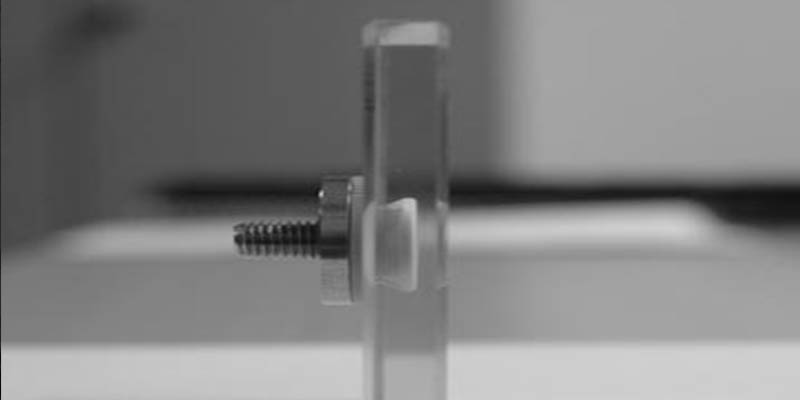Downloads
DOI:
https://doi.org/10.7480/jfde.2014.1-2.881Abstract
The highest transparency in glass facades is obtained with point fitted glass units. Point fitted insulating glass units minimize thermal bridging and lead to glass facades with better energy efficiency. Though, insufficient knowledge is present to offer a design method for point fittings in insulating glass. Therefore research has been carried out to extend the existing SLG-design-method (Linear superposition of local and global stress components) of Beyer for point fitted single and laminated glass to insulation glass units. This paper presents the first results of this research campaign. Load bearing tests on point fittings in single glazing have been conducted. A finite element model of the point fitting is calibrated by strain comparison. A test campaign for the deviation of a material law for silicone, used as secondary sealant in the edge seal system, is presented. The verified FE-model is implemented in a selected insulation glass unit, and the influence of the edge distance of the point fitting, as well as the edge bond stiffness and geometry on the stress peak at the borehole is investigated. In addition, the size of the so called ‘local area’ is adjusted for insulation glass units.
How to Cite
Published
Issue
Section
License
Copyright (c) 2015 Mike Tibolt, Christoph Odenbreit

This work is licensed under a Creative Commons Attribution 4.0 International License.
Authors or their institutions retain copyright to their publications without restrictions.
References
Deutsches Institut für Normung. (2002). DIN EN 1990: Grundlagen der Tragwerksplanung (DIN EN 1990). Berlin, Germany: DIBT.
Deutsches Instituts für Bautechnik (DIBT). (2004). Punktgehaltene Verglasungen mit Glasslinie-Tellerhaltern: Allgemeine bauaufsichtliche Zulassung (Z-70.2-99). Berlin, Germany: DIBT.
Deutsches Instituts für Bautechnik (DIBT). (2007). Punktgehaltene Verglasung mit fischer Zykon Punkthaltern (FZP-G-Z): Allgemeine bauaufsichtliche Zulassung (Z-70.2-122). Berlin, Germany: DIBT.
Deutsches Institut für Normung. (2010). DIN 18008-1: Glas im Bauwesen – Bemessungs- und Konstruktionsregeln, Teil 1: Begriffe und allgemeine Grundlagen (DIN 18008-1). Berlin, Germany: Beuth Verlag.
Deutsches Institut für Normung. (2010). DIN EN 1991-1-3: Einwirkung auf Tragwerke, Teil1-3: Allgemeine Einwirkungen, Schneelasten (DIN EN 1991-1-3). Berlin, Germany: Beuth Verlag.
Deutsches Institut für Normung. (2010). DIN EN 1991-1-4: Einwirkung auf Tragwerke, Teil1-4: Allgemeine Einwirkungen, Windlasten (DIN EN 1991-1-4). Berlin, Germany: Beuth Verlag.
Deutsches Institut für Normung. (2013). DIN 18008-3: Glas im Bauwesen – Bemessungs- und Konstruktionsregeln, Teil 3: Punktförmig gelagerte Verglasungen (DIN 18008-3). Berlin, Germany: Beuth Verlag.
Dias, V. (2013). Development of adhesives constitutive material laws for the assessment of bonded steel to glass partial composite beams (Doctoral dissertation). University of Luxembourg, Luxembourg.
Dow Corning. (2004). Qualitätshandbuch für Isolierglas – Leitfaden für die Verwendung von Silicondichtstoffen bei der Isolierglasfertigung. Wiesbaden, Germany: Dow Corning GmbH.
European Commission. (2007). Accelerating the Development of the Sustainable Construction Market in Europe: Report of the task-force on Sustainable construction (COM (2007) 860 final). Retrieved from http://ec.europa.eu/enterprise/policies/innovation/policy/lead-market-initiative/files/construction_taskforce_report_en.pdf
European Organisation for Technical Approvals (EOTA). (2012). ETAG 002: Structural sealant glazing kits (SSGK) (ETAG 002). Retrieved from http://www.sgpstandard.cz/editor/files/stav_vyr/dok_es/eta/etag/002_1_en.pdf
Hechler, O., Dias, V., Odenbreit, C., Tibolt, M., & Zilian, A. (2012). Design concept for point fitting of insulation glass units. In Proceedings of VI International Congress on Architectural Envelopes (ICAE). San Sebastian, Spain.
Kasper, R. (2006). Berechnungskonzept für die Bemessung von punktförmig gelagerten Glasscheiben. Stahlbau 75(6), 454-461.
Külmeyer, M. (2001). Statistische Auswertungsmethoden für Ingenieure. Berlin, Germany: Springer Verlag.
O’Hara, G. P. (1983). Mechanical Properties of Silicone Rubber in a Closed Volume (Report ARLCB-TR-83045, SBI-AD-E440224). Large Caliber Weapon Systems Laboratory, Army Armament Research and Development Center.
Schäfer, M. (2002). Darstellung hochmolekularer und verzweigter Polyisobutene durch Einsatz von Makroinitiatoren, cyclischen Dienen und Initiatormonomeren. (Doctoral dissertation). Technische Universität München, Germany.
Schneider, J. (2001). Festigkeit und Bemessung punktgelagerter Gläser und stoßbeanspruchter Gläser. (Doctoral dissertation). Technsiche Universität Darmstadt, Germany.
Schneider J., Hof P., & Block, C. (2002). Fastening of Glass Panes with Undercut Anchors. Numerical tempering simulation, experiments, load-bearing-capacity. Proceedings of the 2nd International Colloquium on Modelling of Glass Forming and Tempering (M.G.F.T) (pp. 247-254). University of Valencienne2, France.
Siebert, B. (2006). Anforderungen für ein Berechnungskonzept für die Bemessung punktgelagerter Verglasungen. Stahlbau, 75(8), 652-657.
Sika. (2012). Sikasil® SG-20: High strength structural silicone sealant (Product data sheet). Retrieved from http://SIL%20SG-20%20-%20642.pdf
Tibolt, M., Hechler, O., & Odenbreit, C. (2013). Numerical investigation of insulation glass units with undercut point fittings. In J. Belis, C. Louter & D. Mocibob (Eds.), COST Action TU0905: Mid-Term Conference on Structural Glass (pp. 437-445). Poreč, Croatia: CRC Press.
Tibolt, M., Hechler, O., & Odenbreit, C. (2014). Analytical extension of a climate load model for undercut point fitted IGU. In C. Louter, F. Bos & J. Belis (Eds), Challenging Glass 4 & COST Action TU0905 Final Conference (pp. 199-208). Lausanne, Switzerland: IOS Press.
Tibolt, M. (2015). Investigations in discrete connections between insulating glass and steel for energy efficient and transparent building envelopes (Doctoral dissertation). University of Luxembourg, Luxembourg. To be published.
Van den Bergh, S., Hart, R., Jelle, P., & Gustavsen, A. (2013). Window spacers and edge seals in insulating glass units: A state-of-the-art review and future perspectives. Energy and Buildings, 58, 263-280.
Wurm, J. (2007). Glass structures: Design and construction of self-supporting skins. Basel, Switzerland: Birkhäuser Verlag.
Young, W. C. (1989). Roark’s Formulars for Stress and Strain, (6th ed.). Singapore, Singapore: McGraw Hill.
